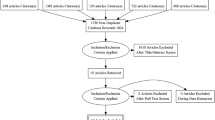Abstract
Our aim was to compare the quality of pelvicalyceal visualization on computed tomography (CT) urography using a small intravenous contrast material dose, hydration, and high-resolution multidetector CT (MDCT) with that of conventional helical CT. The test (MDCT) group (49 consecutive patients, 98 kidneys) was scanned 5 min following an intravenous bolus of 30 ml of iodinated contrast material. The control (helical CT) group (50 consecutive patients, 95 kidneys) was scanned 5 min following injection of 120–150 ml of intravenous contrast material. Enhancement and quality of calyceal detail were measured using a five-scale grading system (1 for no detail, 5 for cupped calyces). Calyceal attenuation was substantial in both groups (more than 220 Hounsfield units, HU) but less in the test group compared with the control group (mean 475 and 920 HU, respectively), p<0.0001. In the test group, the calyceal attenuation was less than 500 HU in the majority of cases (65/98 kidneys), while the opposite was true for the control group, where calyceal attenuation was more than 750 HU in 50/95 kidneys (p<0.001). The quality of calyceal detail was 3.4/5 in the test group compared with 1.8/5 in the control group (p<0.0001). The combination of hydration, low-contrast dose, and the high image resolution achieved with MDCT significantly improves calyceal visualization in CT urography.




Similar content being viewed by others
References
Sheth S, Scatarige JC, Horton KM, Corl FM, Fishman EK (2001) Current concepts in the diagnosis and management of renal cell carcinoma: role of multidetector CT and three-dimensional CT. Radiographics 21:S237–S254
Catalano C, Fraioli F, Laghi A et al (2003) High-resolution multidetector CT in the preoperative evaluation of patients with renal cell carcinoma. Am J Roentgenol 180:1271–1277
Smith RC, Verga M, Dalrymple N, McCarthy S, Rosenfield AT (1996) Acute ureteral obstruction: value of secondary signs of helical unenhanced CT. Am J Roentgenol 167:1109–1113
Amis ES Jr (1999) Epitaph for the urogram. Radiology 213:639–640
Katz DS, Hines J, Rausch DR et al (1999) Unenhanced helical CT for suspected renal colic. Am J Roentgenol 173:425–430
Miller OF, Rineer SK, Reichard SR et al (1998) Prospective comparison of unenhanced spiral computed tomography and intravenous urogram in the evaluation of acute flank pain. Urology 52:982–987
Boridy IC, Nikolaidis P, Kawashima A, Sandler CM, Goldman SM (1998) Noncontrast helical CT for ureteral stones. World J Urol 16:18–21
McNicholas MM, Raptopoulos VD, Schwartz RK et al (1998) Excretory phase CT urography for opacification of the urinary collecting system. Am J Roentgenol 170:1261–1267
McCollough CH, Bruesewitz MR, Vrtiska TJ et al (2001) Image quality and dose comparison among screen-film, computed, and CT scanned projection radiography: applications to CT urography. Radiology 221:395–403
McTavish JD, Jinzaki M, Zou KH, Nawfel RD, Silverman SG (2002) Multi-detector row CT urography: comparison of strategies for depicting the normal urinary collecting system. Radiology 225:783–790
Caoili EM, Cohan RH, Korobkin M et al (2002) Urinary tract abnormalities: initial experience with multi-detector row CT urography. Radiology 222:353–360
Hu H, He HD, Foley WD, Fox SH (2000) Four multidetector-row helical CT: image quality and volume coverage speed. Radiology 215:55–62
McCollough CH, Zink FE (1999) Performance evaluation of a multi-slice CT system. Med Phys 26:2223–2230
Scolieri MJ, Paik ML, Brown SL, Resnick MI (2000) Limitations of computed tomography in the preoperative staging of upper tract urothelial carcinoma. Urology 56:930–934
Buckley JA, Urban BA, Soyer P, Scherrer A, Fishman EK (1996) Transitional cell carcinoma of the renal pelvis: a retrospective look at CT staging with pathologic correlation. Radiology 201:194–198
Heneghan JP, Kim DH, Leder RA, DeLong D, Nelson RC (2001) Compression CT urography: a comparison with IVU in the opacification of the collecting system and ureters. J Comput Assist Tomogr 25:343–347
Author information
Authors and Affiliations
Corresponding author
Rights and permissions
About this article
Cite this article
Raptopoulos, V., McNamara, A. Improved pelvicalyceal visualization with multidetector computed tomography urography; comparison with helical computed tomography. Eur Radiol 15, 1834–1840 (2005). https://doi.org/10.1007/s00330-005-2699-8
Received:
Revised:
Accepted:
Published:
Issue Date:
DOI: https://doi.org/10.1007/s00330-005-2699-8




